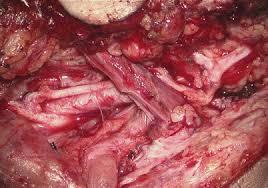Understanding Facial Nerve Decompression: Treatment and Benefits
What is Facial Nerve Decompression?
Facial nerve decompression is a surgical procedure performed to alleviate the compression of the facial nerve, which is responsible for controlling the muscles of the face. When the facial nerve becomes compressed or entrapped, it can lead to various debilitating symptoms, including facial paralysis, muscle weakness, involuntary muscle contractions, and pain. Facial nerve decompression aims to relieve the pressure on the nerve, restore its normal function, and improve the patient's quality of life.
 When is Facial Nerve Decompression Performed?
When is Facial Nerve Decompression Performed?
Facial nerve decompression is typically indicated in cases of facial nerve compression caused by conditions such as Bell's palsy, hemifacial spasm, and facial nerve trauma. Bell's palsy is a common condition characterized by sudden facial paralysis due to inflammation of the facial nerve, while hemifacial spasm involves involuntary twitching or contractions of the muscles on one side of the face. Facial nerve trauma, resulting from injury or surgery, can also lead to nerve compression and subsequent facial dysfunction.

The Facial Nerve Decompression Procedure
During facial nerve decompression surgery, the patient is usually placed under general anesthesia. The surgeon makes an incision near the affected area, typically around the ear or behind it, to gain access to the facial nerve. The compressed segment of the nerve is carefully identified, and any surrounding structures causing compression, such as bony overgrowths or scar tissue, are removed or repositioned. This alleviates the pressure on the nerve, allowing it to function properly again.
Benefits of Facial Nerve Decompression
Facial nerve decompression offers several potential benefits to individuals suffering from facial nerve compression disorders. The primary benefit is the restoration of facial muscle function and the alleviation of facial paralysis. By relieving the compression on the facial nerve, the surgery aims to improve facial symmetry, voluntary muscle control, and facial expressions, leading to improved self-esteem and emotional well-being.
Additionally, facial nerve decompression can help reduce pain and discomfort associated with facial nerve compression. Many patients experience facial pain, muscle spasms, and abnormal sensations due to nerve irritation, which can be significantly relieved by the surgical procedure.
Recovery and Outlook
Following facial nerve decompression surgery, patients will need a period of recovery. Swelling and bruising are common after the procedure, but they typically subside within a few weeks. The full recovery process may take several months, during which physical therapy and facial exercises are often recommended to enhance muscle strength and coordination.
The success rate of facial nerve decompression varies depending on the underlying condition and the extent of nerve damage. While the procedure can yield positive outcomes, complete restoration of facial function is not always guaranteed. It is essential to have realistic expectations and discuss potential outcomes with the surgeon.
In conclusion, facial nerve decompression is a surgical procedure designed to relieve facial nerve compression, restore facial muscle function, and alleviate related symptoms. By understanding the procedure and its potential benefits, individuals with facial nerve compression disorders can make informed decisions regarding their treatment options and ultimately improve their quality of life.
We are associated with experienced and highly skilled medical professionals. We use the latest medical technology available in the world and we provide medical services in collaboration with JCI & NABH Certified hospitals only. Our services include various types of treatment and organ restructuring and transplant.
